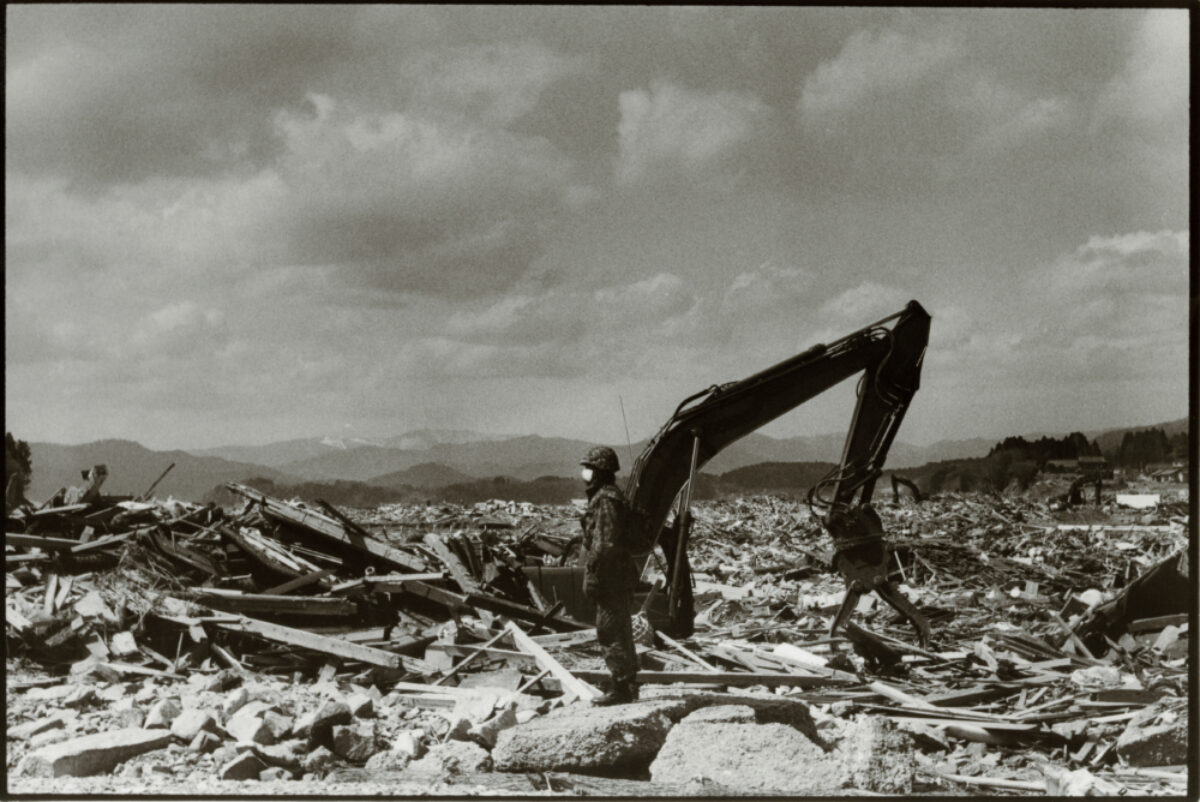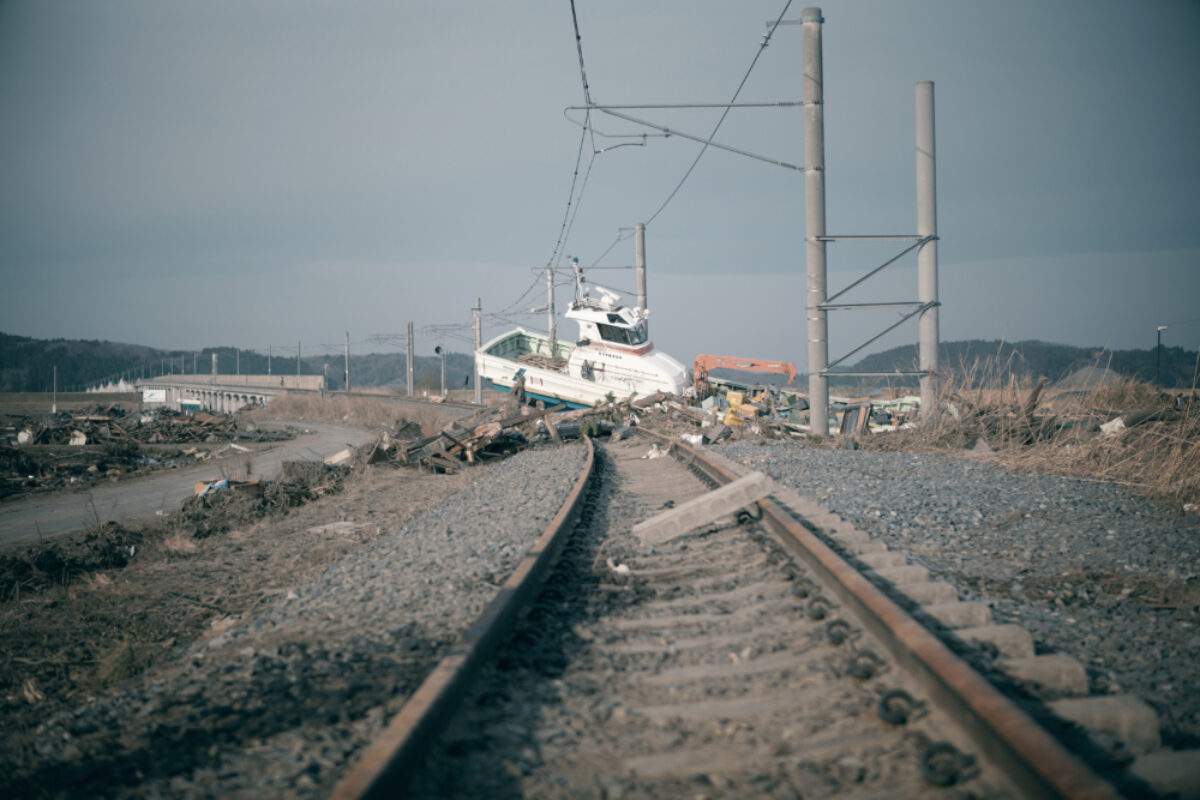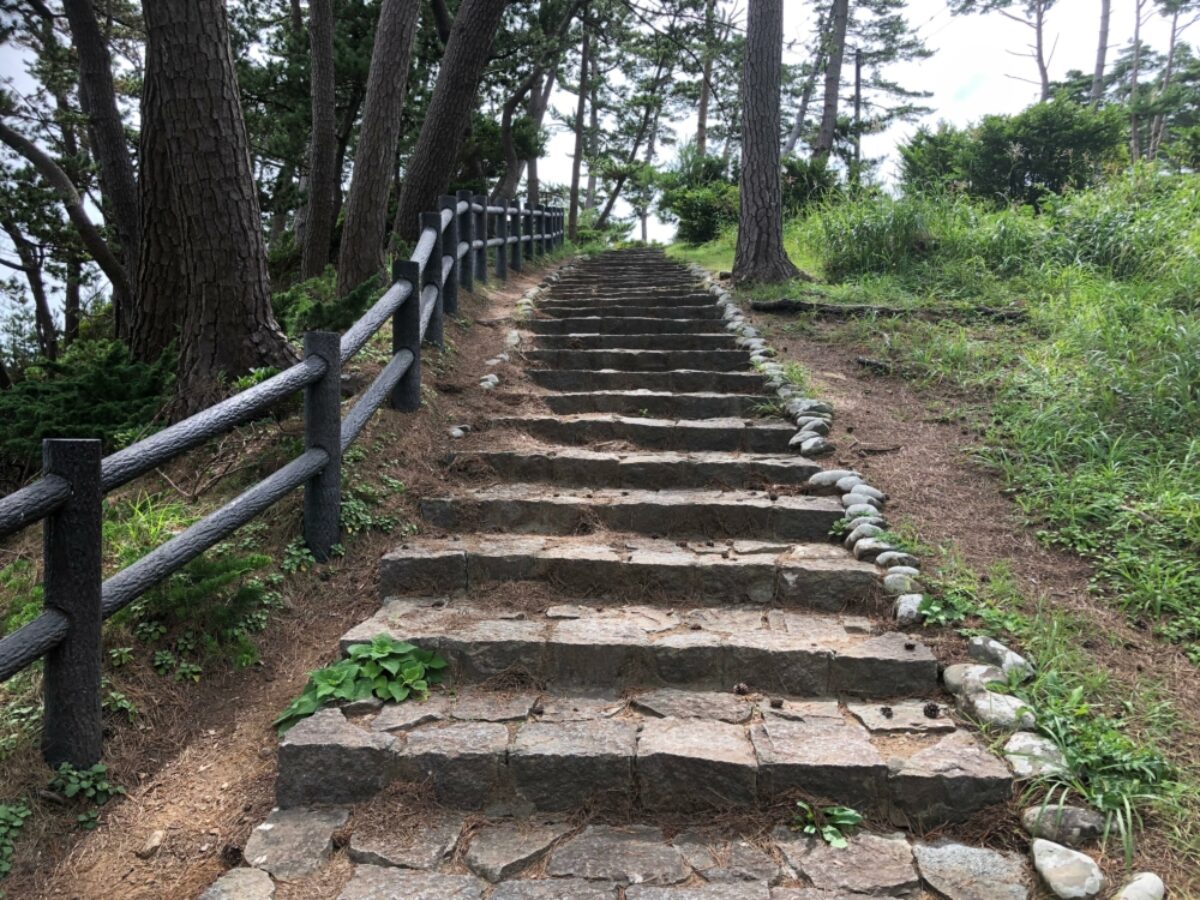After the tsunami: The recovery of Tohoku
How Japan is rebuilding and remembering
You’d have to be from a different planet to not know about the 2011 earthquake and tsunami that devastated the northeastern Tohoku coastline in Japan. On March 11th, 2011, a 9.1 magnitude earthquake – the largest ever to hit Japan – took place 231 miles northeast of Tokyo, causing a tsunami with 30-foot waves. More than 20,000 people died. It is one of the biggest natural disasters of the 21st century.
Japanese citizens, fraught with grief and homelessness as a repercussion of the disaster, could be forgiven for withdrawing from decisions about how to rebuild and leave it to local governments. Instead, they have united to rebuild lost villages, towns, cities, highways and sea defences. This is their story.

Japanese soldier surveying the damage the day after the tsunami
The Miracle Village
Okirai is known as the miracle village as all but one of the residents made it up the hills to safety. The only casualty was a young female student at the university, who died rescuing an elderly resident in a wheelchair. The people of Okirai built a memorial to the girl and decorated it with things that she would like such as teddy bears, charms, pictures of Japanese pop stars and flowers. Her parents still visit the memorial, nine years on.
After the tsunami, Okirai resident Waichiryo Katayama built Shiome, the Tsunami Memorial Museum, from wood, furniture and other items he found during the cleanup operation. Residents that had nowhere to live or store their damaged possessions gave him permission to use their belongings. The museum is a wonderful place, painted in bright yellow, pink, red, blue and green. It’s filled with happiness and is used by hikers and locals to hang out, strike up a conversation and have a barbecue. Its doors are always open, and hikers are welcome to stay for as long as they like, without charge. The fridge is full of beer and Waichi happily goes and gets guests food.
Okirai’s primary school once stood ten metres lower than the village’s main road. Its entrance faced the sea, so children had to go around the building to get to the road when leaving.
Fortunately, a city councillor approached the local municipality to build an emergency evacuation staircase bridge over the road from the school’s second floor. The staircase was completed in December 2010, just three months before the tsunami hit. As a result, everyone that was in the building was evacuated in time.
The school was destroyed, but Waichiryo found the staircase and carried it on his back with the help of some volunteers to Shiome. Today, it is part of the museum and is known as the Miracle Bridge.

Beached yacht, Fukushima
Rebuilding Onagawa
Onagawa in the Miyagi prefecture has been completely rebuilt – only it is now eight metres higher than the original city, to protect it from natural disasters. The area around the waterfront is limited to a park and fishing industry buildings. It’s doubtful that anyone wants to live on the doorstep of the Pacific Ocean in Onagawa again.
The wrecked police station – that was literally ripped from the ground – is a memorial reminding future generations of what happened here and behind that, protected by a road built high enough to act as a barrier to a low level one tsunami (about four metres high), is the commercial district served by a brand new train station. Further out of town, new residential areas are being cut into the mountainsides, just high enough to be safe from a level 2 tsunami (at around 17 metres high).
The municipality is also thinking about the future, creating an attractive package to get young people back to Onagawa. It seems to be working. On an evening stroll through the town’s lively bars, It’s impossible not to strike up a conversation with Japanese students keen to practice their English-speaking skills.
After the tsunami, Sakura moved away with her parents to London, where she’d stayed until early 2019. She told me she felt an urge to return and visit Onagawa. It wasn’t as she remembered it, but she decided to stay. She feels at home and safe now that Onagawa has been built on higher ground.

Barber shop, Onagawa
Sendai, Natori and the Michinoku Coastal Trail
Sendai is the capital city of the Miyagi prefecture and was the largest city to be hit by the earthquake. The outskirts of the city were devastated, but the centre withstood the impact. It’s a city that is full of life with giant shopping malls, neon lights and streets filled with restaurants and bars.
The four-storey Arahama elementary school is 700m from the coast. During the tsunami, the building flooded, and 320 people were trapped, with water engulfing the second floor. All 320 people were rescued after being evacuated from the school’s rooftop.
I visited a noodle bar in Sendai and got talking to one of the waiters. He was one of the pupils at the school that was rescued from the roof. He told me of the teachers’ fear when the siren went off and the speed as they ran up to the roof. Watching the waves surge in around the building was terrifying, but he has put the trauma behind him, and now as an adult, wants to move on with his life.
The school has since been redeveloped into a museum for tourists and locals to give thanks for the rescue and to learn about the tsunami. When wandering the streets of Sendai, you’d have no idea that an earthquake happened – unless you visit Arahama.

The Michinoku Coastal Trail
Credit: James ClarkJust over ten kilometres separates Sendai from Natori. However, the contrast is stark. Natori was one of the worst-hit areas. The tsunami swept in and now Natori is just rice fields and an empty space that stretches as far as the eye can see. I spoke to Kumi from the Michinoku Coastal Trail team, who visited Natori a couple of days after the tsunami. Where Natori had once been, only piles of debris remained. It was utter devastation, she said.
This is a place to get a feel for the destructive force of mother nature. Until recently, the only things to see here were workmen and bulldozers piling up soil to construct a 12.5m high seawall to protect future residents.
To invest and attract people back to the area, the Michinoku Coastal Trail team has built the Natori Visitor Centre for hikers. Plans are in place to build a garden and camping area at the back of the building. In the distance, some small market shops open one or two days a week.
The Michinoku Coastal Trail is a brand-new tourist destination to support the region’s long-term recovery. Opened in June 2019, it consists of 1,000km of hiking trails along the Pacific Ocean, connecting the city of Hachinohe in Aomori Prefecture with Soma in Fukushima. The entire trail takes around 40 days to complete, but it is possible to do sections of it.
Yusuke Sakuraba, the Chief of the Ministry of Environment marked the first 750km of the Michinoku Coastal Trail on foot with his son secured to his back. He returned at weekends and during holidays from work and continued hiking the route until he had completed and marked it.
Hikers on the Michinoku Coastal Trail gather at visitor centres along the route to exchange stories of being invited into people’s homes and given dinner, sake, a bed or couch for the night and a shower in the morning. That’s one of the many things that make this part of Japan so special -- everyone wants to give something back to the international community that helped them.




